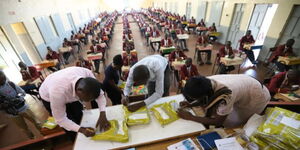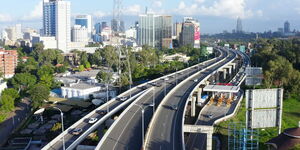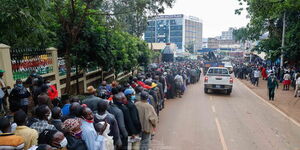Philemon Sang, the man behind the sculptures of President William Ruto and Faith Kipyegon, was allegedly beaten up by goons in his attempt to seek an audience with the Head of State.
Speaking to Kenyans.co.ke, Sang’s father, Thomas Mitei, narrated how an attempt to seek the area MP to help him present the sculptures to Ruto ended with him nursing serious injuries.
Sang, who hails from Kaplelach village, Nyota Ward, had gone to Sirikwa on Sunday, October 26, hoping to meet an official from the Office of the President ahead of Ruto’s visit on Monday.
According to Mitei, his son had carried with him the sculpture of Ruto as a symbol of respect and loyalty.
However, upon his arrival, he was attacked by goons who were allegedly linked to the MP.
The MP apparently intervened and went on to instruct his team to escort Sang to a car and be taken to a safe place, not knowing that it was a set-up. According to the father, the car stopped at a maize farm where Sang was beaten up a second time and left seriously injured.
Sang was taken to Keringet Hospital, where he received treatment for his injuries and is currently recuperating at home.
Self-Trained Artist
Mitei narrated that his son was a talented self-trained artist who mainly worked as a carpenter. He added that it was not the first time he had sculpted an image for Ruto, noting that he had done one back when Ruto was the Deputy President.
Mitei revealed that for the sculpture, Sang got Ksh50,000 from the DP, which he noted went a long way in giving Sang more inspiration to express himself artistically.
Aside from Ruto, Sang has also done artworks for other politicians, including Nakuru Governor Susan Kihika.
Sang first gained fame after a sculpture of athlete Faith Kipyegon that he had done went viral. The sculpture split opinion, with some criticising its quality but others acknowledging the effort that went into recognising one of Kenya’s best athletes.
The sculpture, which was done after Kipyegon clinched victory in the Paris 2024 Olympics, had been erected in Eldoret, but was later removed after a massive wave of criticism from Kenyans.












